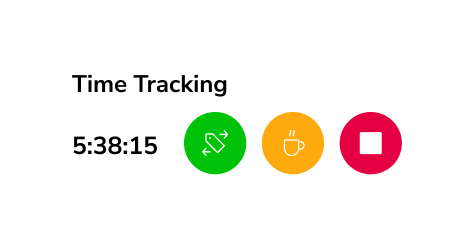Finding remote work is the goal of many professionals seeking flexibility, autonomy, and a better quality of life.
Remote work has become a desirable reality, offering benefits like work-life balance and the freedom to work from anywhere in the world.
However, securing this type of opportunity requires strategy, focus, and proper preparation.
In this article, we’ve gathered best practices and advice from recruitment specialists to help you find remote work and stand out in the global remote job market.
By following these steps, you’ll be better prepared to stand out in a competitive market, seize top opportunities, and take a concrete step toward your dream job and much-desired financial freedom.

Photo by Andrea Piacquadio on Pexels
This Article Covers:
- #1. Update or Tailor Your Profile for Remote Roles
- #2. Use Smart Tools to Streamline Remote Job Applications
- #3. Leverage Remote Job Platforms
- #4. Set Alerts and Join Remote Work Communities
- #5. Upskill and Stay Relevant
- #6. Get Ready for Remote Interviews
- #7. Stay Proactive and Consistent
- Final Thoughts on Finding Remote Work
#1. Update or Tailor Your Profile for Remote Roles
Before trying to land remote work, ensure your resume, portfolio, and LinkedIn profile are up to date and tailored for remote positions.
Highlight past remote work experience, skills such as time management, asynchronous communication, and autonomy. These are highly valued by recruiters hiring for remote roles.
Avoid sending generic applications. Carefully read the job description and customize your resume and cover letter to match the company’s culture and requirements.
Show that you can work independently, communicate clearly, and meet deadlines without direct supervision. Mentioning productivity techniques like the Eisenhower Matrix or the Pareto Principle can help you stand out from other candidates.
Tips: Use ChatGPT to improve and customize your resume for remote roles. Here are some helpful prompts:
- “Write a resume for the [Job Title] role based on this job description: [paste job description].”
- “Write a resume for [Job Title] at [Company Name] with highlighted impact and metrics. [paste job description].”
- “Create a custom resume for [Job Title] at [Company Name]. Include a professional summary and my past 10 years of experience with 3–5 bullet points per job. Use relevant keywords from the job description. Don’t include an objective or references.”
- “Based on this job description for [Job Title] at [Company Name], write a resume based on my past [X] years of experience in roles such as [A, B, C]. Include 3–5 points per job with metrics and keywords. Don’t include an objective.”
- “Rewrite this resume and add a section for [e.g., Certifications].”
- “Rewrite this cover letter to align with a remote role in [Area Name].”
- “Create a cover letter highlighting soft skills and remote experience.”
- “Improve my resume for a remote job in [Field Name].”
- “Add remote-related skills to my professional profile.”
#2. Use Smart Tools to Streamline Remote Job Applications
Digital tools can be powerful allies in your remote job search, helping you stay organized, professional, and efficient. Two trusted platforms to start with are:
Enhancv, a user-friendly resume builder that lets you craft polished, modern resumes. One of its standout features is the ATS (Applicant Tracking System) checker, which ensures your resume is compatible with many employers’ screening systems. This helps you get past automated filters and in front of actual recruiters.
Huntr is an all-in-one job application tracker. In addition to resume creation, its Kanban-style dashboard lets you save jobs, add notes, track application status, and organize your job hunt in one place—perfect for managing multiple applications and preparing for interviews.
If you’re looking for other tools to customize your job search experience, you can also explore:
- Teal HQ – Combines resume building with job tracking features
- Resume.io – Offers globally used resume templates with built-in guidance
- Notion or Trello – Ideal for building a personalized job search dashboard
- Zety or Novoresume – Excellent for tailored, ATS-friendly resumes
All of these platforms offer free plans, making them perfect for anyone just starting or looking to level up their remote job search process.
Already working remotely or just getting started? Don’t miss our article on essential tools for working from home, which includes must-have apps for boosting your daily productivity and staying organized in a remote work setup.
#3. Leverage Remote Job Platforms
While many roles are listed on general job boards, some platforms are focused exclusively on remote and location-independent opportunities. These platforms are widely used by global job seekers and offer roles across various industries and experience levels.
Explore options such as:
- Remote OK
- We Work Remotely
- FlexJobs
- Remotive
- Jobspresso
- Working Nomads
- AngelList Talent (Wellfound)
- Turing
- Upwork
- Fiverr
- PeoplePerHour
- Freelancer.com
- Outsourcely
In addition, many general platforms such as LinkedIn, Indeed, and Glassdoor allow users to filter for remote opportunities by selecting “remote” or “work from home” in the location field.
#4. Set Alerts and Join Remote Work Communities
To stay ahead in the global remote job market, set up job alerts using keywords like “remote,” “work from home,” “telecommute,” “virtual job,” or “work from anywhere.”
This way, relevant opportunities are delivered straight to your inbox, saving time and improving your odds.
Applying shortly after a job is posted can place you ahead of the competition and significantly increase your chances of getting an interview.
Also, many opportunities are shared in niche communities for freelancers, digital nomads, and remote professionals.
Look for Facebook, Discord, Slack, or LinkedIn groups and stay active in conversations. These networks are a great way to stay updated on market trends and find jobs that don’t always appear on job boards.
#5. Upskill and Stay Relevant
To stand out in remote job applications, continually build the skills demanded by remote roles.
Start by reviewing job listings in your target field and identifying common requirements.
If you’re missing some of these skills, look for online courses offering recognized certificates. Platforms like Coursera, Udemy, and edX are great for this.
LinkedIn also offers certified training and can strengthen your application.
Keeping your profile updated with recommendations and relevant posts shows proactivity and engagement. An active profile might be the factor that catches a recruiter’s eye.
Tip: Use ChatGPT to create a custom skill development plan. Try these prompts:
- “What are the most in-demand skills for remote jobs in [Field Name]?”
- “Create a weekly study plan to learn [Skill].”
- “What are the best resources to learn how to use remote collaboration tools?”
- “Generate a detailed study program for [Topic] with SMART goals, milestones, and a timeline.”
- “Create a progressively challenging set of exercises to improve my problem-solving skills in [Field], including solutions and explanations.”
#6. Get Ready for Remote Interviews
Mastering video conferencing tools (like Zoom, Google Meet, or Microsoft Teams) is crucial to landing a remote job. Also, ensure a quiet environment, a stable internet connection, and a good camera and microphone.
Be ready to answer questions about time management, collaborating with remote teams, and working independently.
Mention time management techniques like time blocking and the Ivy Lee method to demonstrate your ability to prioritize tasks and stay organized during the interview.
Tip: Use ChatGPT to prepare better for remote interviews. Try these prompts:
- “Simulate a remote job interview in [Field Name] and give me feedback on my answers.”
- “Based on this job description [Paste Job Description], what are common interview questions for [Job Title]?”
- “I’m interviewing for [Job Title] at [Company]. I have [X years of experience] in [Field]. What technical topics should I master for the interview? List by priority.”
- “Provide probable questions, ideal answers, and useful notes for a [Job Title] interview in a [Industry] company.”
- “Here’s a job description: [Paste it]. What are the top five key skills for this role?”
- “What are the biggest challenges someone in the [Job Title] role might face?”
#7. Stay Proactive and Consistent
Competition for remote jobs is competitive, so it’s essential to stay consistent. Apply daily, refine your profile, and stay updated on companies hiring remotely.
It’s easy to get distracted or procrastinate. Use the Pomodoro technique to stay focused during your application sessions and maintain a consistent approach.
Track the time you spend on job searches — from researching roles to submitting applications. A free time tracking software helps you see how much time you’re investing.
Spending too many hours without results might mean it’s time to revise your resume or take additional training.
This tracking helps you optimize your effort and make strategic adjustments when needed.
Final Thoughts on Finding Remote Work
Finding remote work takes consistency and the right tools. By applying these strategies, you’ll be better equipped to stand out and land the best opportunities.
If you’re already working remotely — or planning to start — having a reliable system to track your working hours can make all the difference.
There are free digital time clocks that let you log hours across devices, analyze productivity, and integrate with billing tools to ensure every minute of your effort is properly valued.
Optimize your routine, avoid burnout, and make sure you’re paid fairly. The first step to a sustainable remote career is managing your time well.


